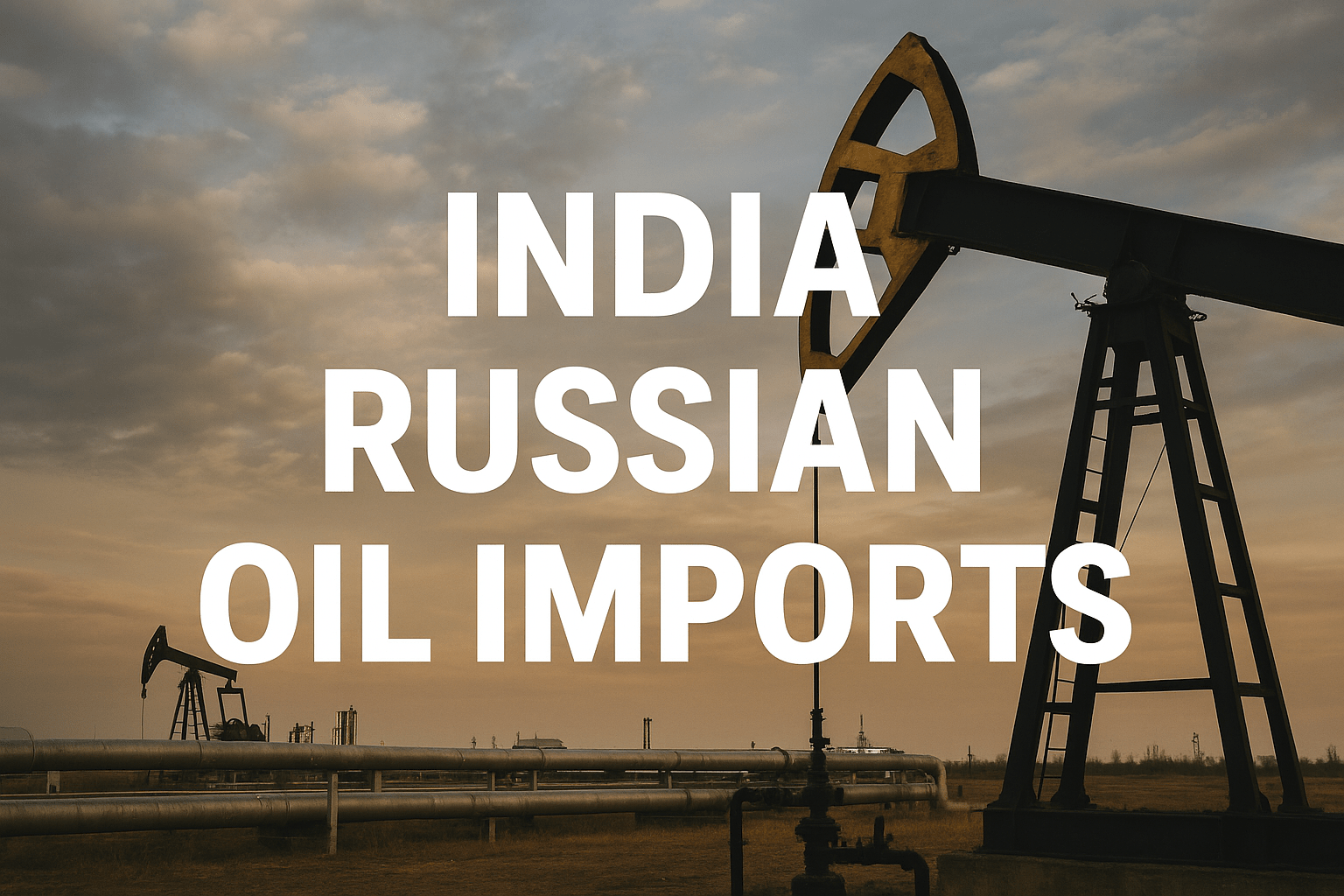India Russian oil imports have surged into the center of global attention as President Donald Trump announced a fresh tariff plan aimed squarely at India’s continued purchase of Russian crude. This move has shaken diplomatic corridors and stirred speculation in energy markets, with analysts questioning whether the U.S. can truly disrupt one of the most significant Russia India oil trade partnerships in recent years.
A direct challenge to India’s energy strategy
On August 6, Trump unveiled an additional 25% tariff on Indian imports, citing New Delhi’s steady purchases of Russian crude. If enforced on August 28 as planned, the new levy could double tariff rates on some Indian goods to 50% a level so steep it could all but erase $87 billion worth of trade between the two countries recorded in 2024.
Trump’s announcement was not just about economics; it was a political message. By tying the tariff threat to Indian oil imports from Russia, he has thrown a spotlight on India’s strategic balancing act between its traditional Western partners and its long-standing relationship with Moscow. The timing just days before a proposed meeting with Russian President Vladimir Putin in Alaska suggests Trump may be using India to strengthen his negotiating position with the Kremlin.
Why India Russian oil imports matter to global markets

The sheer volume of India Russian oil imports makes them a critical piece of the global energy puzzle. In the first half of 2025, India bought roughly 1.8 million barrels per day of Russian crude, representing about 37% of its total oil imports, according to data from commodities analytics firm Kpler.
Much of this crude is the Urals grade a medium-sour oil favored by Indian refiners for its balance of quality and price. Replacing it entirely would not be easy. While Middle Eastern grades such as Saudi Arabia’s Arab Light and Iraq’s Basra Light offer similar qualities, ramping up imports from these sources could trigger price hikes.
This is why market analysts reacted with skepticism to Trump’s threats. Since his tariff announcement, global benchmark Brent futures have fallen to $65.81 per barrel, their lowest in two months. Traders appear convinced that either India will keep buying Russian oil or will find substitutes without causing a supply crunch a clear sign of confidence in India’s adaptability and the resilience of India energy partnership strategies.
The geopolitical ripple effect
Trump’s move has wider implications. By targeting India Russian oil imports, Washington risks pushing New Delhi closer to Moscow the opposite of what U.S. foreign policy traditionally aims for. At the same time, it tests India’s capacity to maneuver through complex global alignments.
China, the world’s largest oil importer and the other major buyer of Russian crude, is less vulnerable to U.S. pressure because the West depends on Chinese exports of critical minerals and manufactured goods. India, however, faces greater exposure. Its private refiners, particularly giants like Reliance Industries, have much to lose if access to Western markets is restricted.
For New Delhi, halting Indian oil imports from Russia is not a straightforward option. In addition to its advantageous price, Russian crude contributes to India’s energy diversification, enhancing energy security and bolstering the country’s long-term foreign policy oil framework.
However, continuing these purchases in the face of US sanctions on Russian oil risks economic retaliation. The dilemma forces Indian policymakers to weigh immediate economic benefits against the potential cost of strained U.S. ties.
Could the market absorb a shock?
Trump and his advisers reportedly believe that global oil producers including the U.S. have enough spare capacity to replace up to 2 million barrels per day of Russian supply. Yet, the reality is more nuanced.
U.S. crude is lighter and produces more gasoline but less diesel, meaning Indian refiners would need to adjust their output mix if they switched to American oil. Such changes could disrupt domestic fuel balances and raise refining costs.
Moreover, if India reduces India Russian oil imports significantly, Chinese refiners may step in to take the surplus, reshaping the Russia India oil trade into a Russia-China dynamic. That would undercut Trump’s goal of financially pressuring Moscow and might even strengthen Russia’s position in Asia.
Markets bet on a climbdown
Despite the political drama, energy traders are betting this will be another “TACO” Trump Always Chickens Out. The oil market’s calm suggests a belief that the U.S. will ultimately avoid actions that could trigger a significant supply shock.
Still, some shifts are already underway. A few Indian refiners have reportedly reduced purchases from Russia in anticipation of possible restrictions, while some Chinese refiners are preparing to ramp up imports. If these changes accelerate, the balance of the global oil market could tilt once again, and the India energy partnership landscape could see lasting changes.







